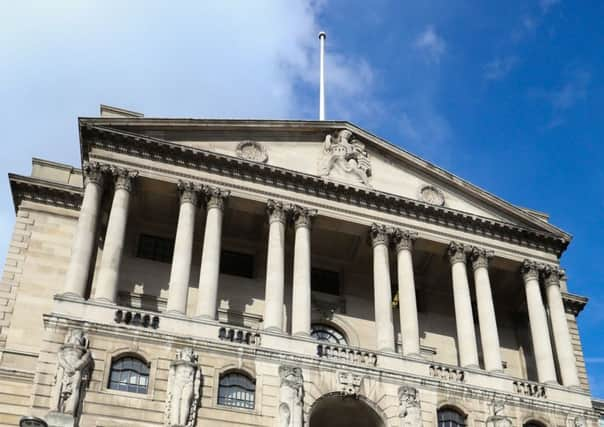Martin Flanagan: Inflation paves way for further rate cut
This article contains affiliate links. We may earn a small commission on items purchased through this article, but that does not affect our editorial judgement.


Most analysts expected the consumer price index to rise again after incremental increases in June and July, but it stayed unchanged at 0.6 per cent.
However, a further rate cut will be a fleeting opportunity. The plunge in the value of sterling following Britain’s vote to quit the EU means imported goods, food and raw material costs are all set to rise inexorably in the coming months.
Advertisement
Hide AdAdvertisement
Hide AdIt would be extraordinary against this backdrop if UK inflation did not start to rise, even if probably only very gradually at first, towards its medium-term 2 per cent target.
That will make further monetary easing from current rate lows of 0.25 per cent more difficult to sell by the Bank as prudent stewardship of the economy.
While the pound has firmed from its three-decade lows against the dollar, it is still low by historical standards and is likely to come under increased pressure as the byzantine negotiations of Britain’s exit from the single trading bloc unfold like Russian dolls.
Brexit secretary David Davis has said the UK/EU negotiations are so complicated that the infamous equally historical Schleswig‑Holstein question pales into insignificance by comparison (the latter described by Lord Palmerston as only being understood by three people: one dead, one mad and one who had forgotten.)
Inflation is therefore having a respite before the sterling-driven pressures for a rise kick in again. All probably pivots on the September/October meetings of the Bank’s monetary policy committee. After that, the rate cut horse may have bolted.
Challenger banks stymied
Clydesdale Bank boss David Duffy bemoans UK major banks only having to have capital cushions backing their risk-weighted assets (ie loans) of between 10 to 15 per cent. Challenger banks like his own, however, are currently forced by regulators to have well over double that, even up to nearly 40 per cent.
The Bank of England’s Prudential Regulation Authority is said to be sympathetic to the clearly well-founded allegation that challenger banks are playing against loaded dice. Action has been dilatory.
